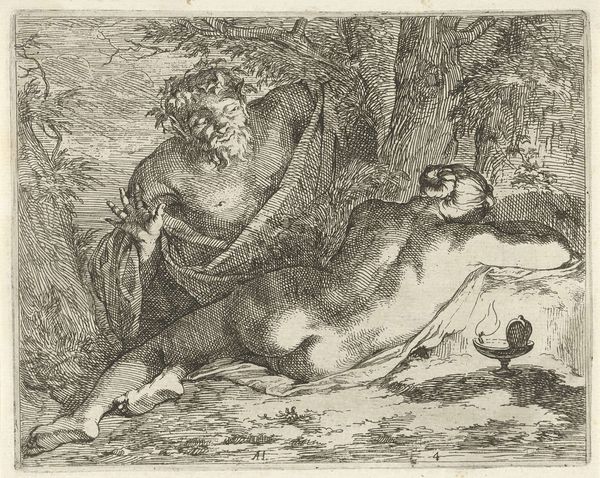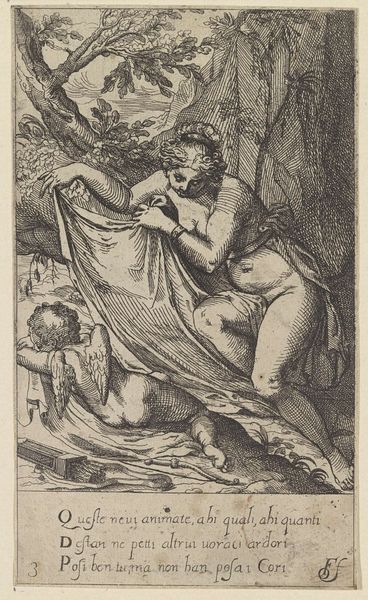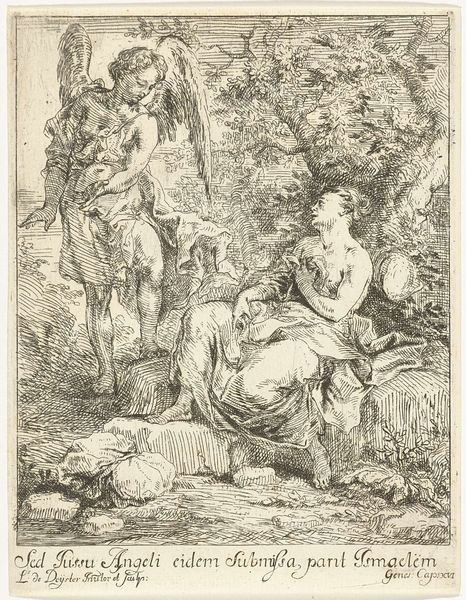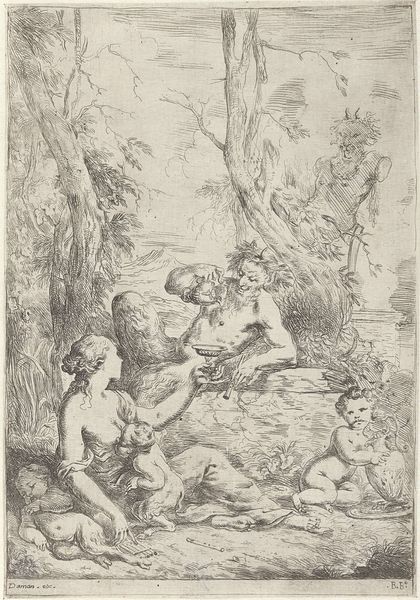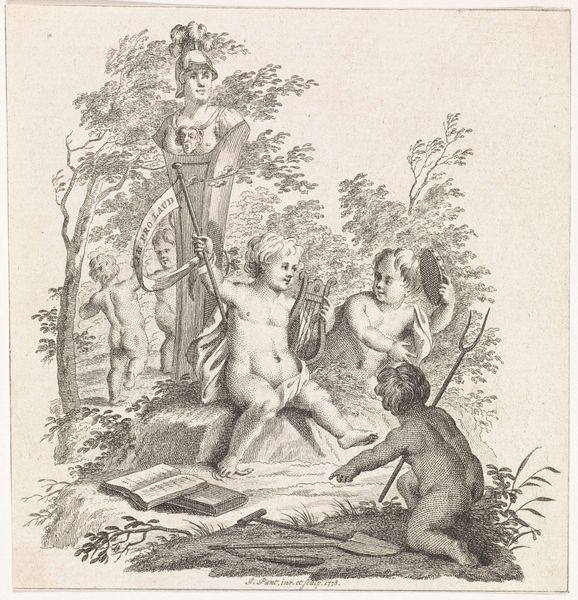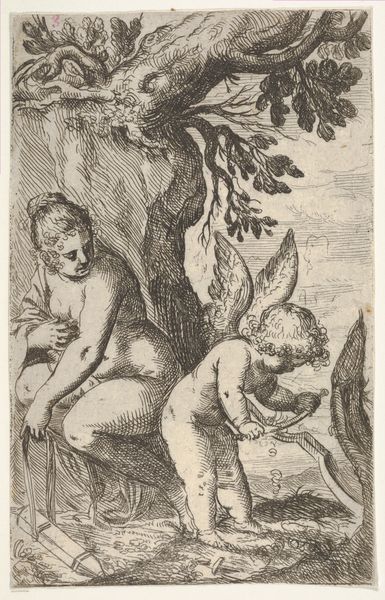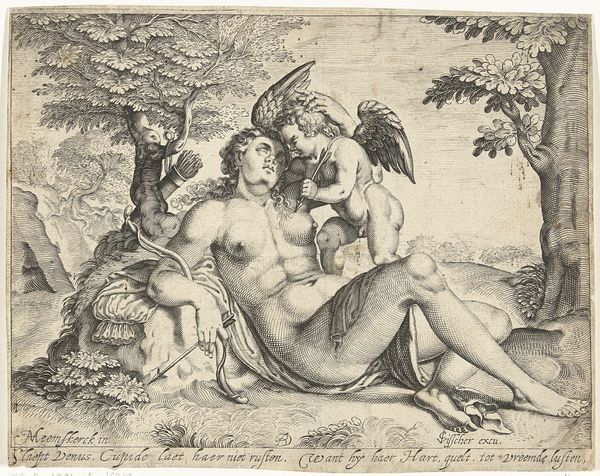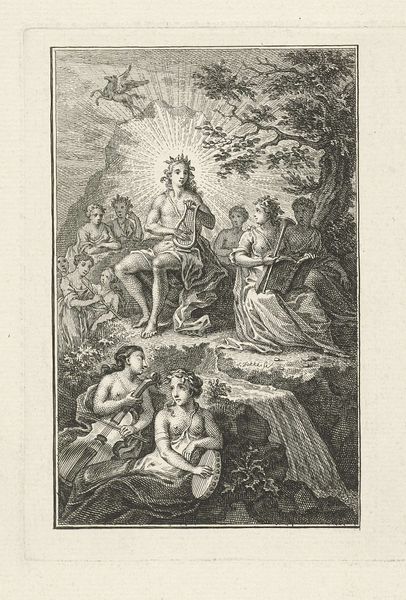
print, etching, intaglio, engraving
#
aged paper
# print
#
etching
#
intaglio
#
old engraving style
#
landscape
#
figuration
#
forest
#
line
#
history-painting
#
engraving
Dimensions: height 136 mm, width 85 mm
Copyright: Rijks Museum: Open Domain
Editor: This is Reinier Vinkeles' "Young Woman Entering the Water," from 1785. It's an etching, so lots of fine lines creating this whole scene of people and animals near the forest. There is a sort of strange, dreamlike feeling, almost biblical with the animals at rest, the water lapping gently, and figures near to the Garden of Eden… What’s your take on this? Curator: As a materialist, I'm drawn to how the printmaking process shapes the scene. Consider the social context: engravings like these weren't simply aesthetic objects. They were reproducible commodities, circulating ideas, and ideals to a burgeoning middle class. Vinkeles, as the etcher, is essentially a skilled artisan operating within a commercial structure. How does the precision and repetition inherent in printmaking influence our understanding of the themes represented, like the idealized female form and harmonious relationship to nature? Editor: That's interesting, I hadn't thought about the economic side of it. It makes you think differently, understanding it was part of a larger printing production line of the 18th century… almost like a manufactured image rather than just some artistic rendering. But wouldn’t a painter still require materials? How different is it? Curator: Absolutely, all artmaking has a materiality. The crucial difference here lies in the intended reproducibility and distribution. This changes its function and audience drastically from an unique, singular painting commissioned by an aristocrat. We can view each print pulled from Vinkeles’ plate as a piece of democratized imagery for a wider audience. Do you think this increased accessibility affects how people consumed or understood representations of femininity and nature? Editor: Yes, probably. This way, more people could access art, art in multiple forms. It brings art to more people… which also, if produced at a factory-like rate, turns it from the personal expression into a consumer good. Wow! I never would have thought of an old etching in these terms before. Curator: It shows how much context matters. Materiality shapes meaning, production shapes content, and both reveal how images participate in social and economic systems.
Comments
No comments
Be the first to comment and join the conversation on the ultimate creative platform.

